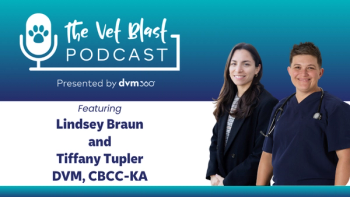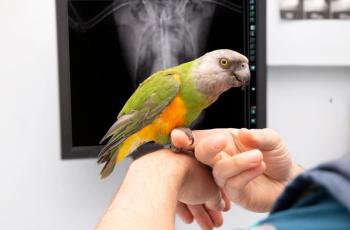
Senior dog undergoes surgery for benign but locally aggressive oral tumor
A grant help helped pay for the removal of a canine acanthomatous ameloblastoma in an 11-year-old Newfoundland/Labrador mix
Earlier this year, an 11-year-old Newfoundland/Labrador mix named Darla was treated at the UC Davis Veterinary Medical Teaching Hospital for a canine acanthomatous ameloblastoma (CAA), a benign but invasive oral tumor. Given the cost of the procedure and Darla’s age, the decision to put Darla through surgery was not an easy one for her owners, Roger and Yolanda Gombert. Financial assistance from a nonprofit organization ultimately helped make the treatment possible.
According to UC Davis, Darla has been in the care of Roger and Yolanda from a young age, when they rescued her as a puppy. After Roger and Yolanda received Darla’s CAA diagnosis, they were referred to the UC Davis Veterinary Medical Teaching Hospital, where both the Radiation Oncology and the Dentistry and Oral Surgery (DOSS) Services at the hospital evaluated Darla. Thereafter, the team at UC Davis explained that although the tumor was benign, it would progressively erode the jaw aggressively without treatment. The damage would cause Darla pain and make it difficult to eat. Eventually, Darla would require palliative care.
“Surgery was recommended as the best course of action,” wrote UC Davis in its report.1
CAA typically presents as a raised, red, gingival mass with an irregular surface, though an irregular and red appearance is not always seen.2,3 Radiographs often reveal invasion into surrounding bone, along with alveolar bone resorption and tooth displacement.2 According to studies, computed tomographic imaging has shown that CAA lesions located within bone are often cystic in appearance and may behave more aggressively than those confined to soft tissue.2 Prognosis is generally “excellent” if the tumor is completely removed.2
Signs of CAA include facial swelling most often in the lower jaw, oral bleeding, loose or missing teeth, excessive drooling and bad breath. Some patients may show no clinical signs, and the tumor may be found incidentally during an examination of the dog’s mouth.4 CAA can occur in all breeds of dogs but is most common in Golden retrievers, Shetland sheepdogs, and Cocker spaniels.3
With the diagnosis explained and the treatment option outlined, Roger and Yolanda were left with a difficult choice. “Should we subject an older, though active, dog to costly and painful procedures?” Roger wondered.1 “What sort of future could she, and we, expect?”
While discussing Darla’s future with the UC Davis care team, Roger and Yolanda found out they qualified for a grant from Petco Love Foundation in partnership with the Blue Buffalo Foundation, which supports cancer treatments for companion animals with pet owners with limited resources or for service animals. The couple then decided to proceed with Darla surgery.
In April, Darla had the tumor completely removed by veterinarians at UC Davis specializing in dentistry and oral surgery. Her mandible was left largely intact. Darla recovered without complications, and no additional treatment was required.
“These days, the only visible signs of her surgery are a slight gap in her teeth (from which a rogue kibble occasionally escapes) and a tendency to drool a little more when she’s excited for treats,” said UC Davis.1
References
- Keilbach L, Warren R. Philanthropic support and specialized surgery saves dog with oral tumor. News release. UC Davis School of Veterinary Medicine. August 7, 2025. Accessed August 14, 2025. https://www.vetmed.ucdavis.edu/news/philanthropic-support-and-specialized-surgery-saves-dog-oral-tumor
- Fiani N, Lommer MJ, Chamberlain TP. Clinical behavior of odontogenic tumors. In: Oral and Maxillofacial Surgery in Dogs and Cats. 2nd ed. Verstraete F, Lommer MJ, Boaz A. Elsevier; 2021. https://www.sciencedirect.com/topics/veterinary-science-and-veterinary-medicine/canine-acanthomatous-ameloblastoma#chapters-articles
- Canine acanthomatous ameloblastoma (CAA). Animal Dentistry & Oral Surgery. July 21, 2021. Accessed August 14, 2025. https://animaldentalspecialist.com/canine-acanthomatous-ameloblastoma-caa/
- Acanthanomatous ameloblastoma in dogs: Diagnosis, treatment & prognosis. PetCure Oncology. Accessed August 14, 2025. https://petcureoncology.com/acanthomatous-ameloblastoma-dogs-diagnosis-treatment-prognosis/
Newsletter
From exam room tips to practice management insights, get trusted veterinary news delivered straight to your inbox—subscribe to dvm360.




